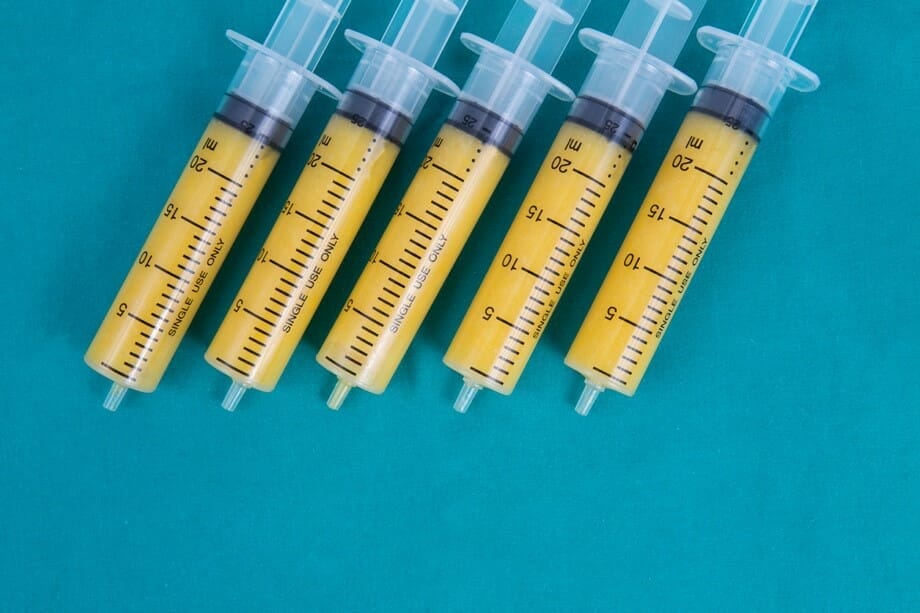Using your own fat for facial rejuvenation
The key to facial rejuvenation may already be hidden in your body.
Mother Nature may be formidable, but it’s no longer true that she can’t be slowed down. People who want to rejuvenate faces that become gaunt or hollow as they age have more safe, easy, effective options than ever before, thanks to advances in injectable treatments like fat grafting and dermal fillers.
Soft tissue spaces like the cheek migrate and lose tone and volume as we grow older. In the hands of the right plastic surgeon, fat grafting and dermal fillers are simple ways to reverse these effects and restore that facial fullness that makes a patient look years younger. These treatments can also be used to create better balance among facial features to correct asymmetries.
These methods are part of a growing trend in plastic surgery toward “tweakments” – procedures that Self magazine characterizes as quick, natural-looking changes that are more subtle than some procedures. The American Society of Plastic Surgeons (ASPS) reports that soft tissue fillers ranked as the second most popular minimally-invasive procedure in the U.S. last year, with 2.6 million injections performed. Cosmetic fat injections enjoyed one of the biggest increases overall, surging 13 percent over the previous year.
But despite their identical goals of adding youthful volume in a way that looks natural, fat grafting and dermal fillers are not interchangeable methods. Read on for a comparison of the pros and cons of each treatment to help you decide which solution will best meet your needs.
FAT GRAFTING
What is fat grafting?
Fat grafting, also known as fat transfer, is the process of removing fat from one part of the body and reinjecting it into another, in this case, the face. The procedure begins with a mini liposuction of an area with extra fat, typically the hips, thighs, or abdomen. The harvested fat is then purified and prepared for injection. As a final step, the fat is injected into the face to plump areas with lost volume and fill out wrinkles.
When does fat grafting work best?
Fat grafting provides incredible, natural-looking results for correcting sunken cheeks, eyelid bags, jowling, thinning features, and general loss of facial fullness. It can also be used at any age to enhance facial contours, such as the lips, cheeks or jawline.
What are the benefits of fat grafting?
While fat grafting is technically used as a filler, it offers a unique set of benefits that sets it apart from other filler products:
• Because fat grafting uses living fat cells from your own body instead of an artificially made gel, the injected material integrates within the existing fat in the treatment area for natural, lasting results.
• There is an extra bonus: the area the fat is harvested from can appear slimmer and more contoured.
• Fat transfers are more versatile than other fillers because they can be injected safely anywhere on the face. They can even be used as alternatives to injectables like botulinum toxin to improve the appearance of lines and wrinkles around the forehead and eyes.
• Fat is a rich source of stem cells, which may help rejuvenate the overlying skin in the treatment area when it is transferred during the procedure.
Are there any downsides to consider?
• Since some of the transferred fat may be reabsorbed back into the body, more than one treatment may be needed to achieve the desired long-term results. With a skilled surgeon, however, future treatments are not common and may not be needed for years.
• Fat grafting is more expensive initially than synthetic facial fillers because the procedure is more complex. However, it usually becomes a more affordable option over time because the results last so long.
• Fat grafting provides immediately noticeable results, although the full effects won’t be visible for a few weeks until swelling subsides.
DERMAL FILLERS
What are dermal fillers?
Dermal fillers are biocompatible gels that can be injected into the skin to temporarily decrease signs of facial aging. Fillers add volume, smooth facial folds, improve contour deficiencies and diminish wrinkles. Although doctors can choose from a lengthy list of filler options that include such recognizable brands as Juvéderm, Restylane, and Sculptra, all are made from hyaluronic acid, poly-L-lactic acid, or calcium hydroxylapatite.
When do dermal fillers work best?
Fillers are an excellent choice for patients who want to “look refreshed” but don’t need specific treatments, or as a temporary, cost-effective way to “test drive” facial rejuvenation methods. They are a good choice for cheek or lip enhancements, and for addressing a few specific wrinkles such as lip lines. Fillers work best on patients with good skin elasticity who are starting to see defined lines appear.
What are the benefits of dermal fillers?
• Facial fillers are popular because they are non-invasive and – If done properly – can achieve good results. There is no surgical prep time because no additional procedures are required to finish the process.
• There is little to no downtime after the procedure – and some patients can return to their day immediately.
• Initial costs are significantly less than fat grafting.
• Swelling can occur, but it usually doesn’t last as long as fat grafting. Most fillers provide immediate results, although some do take longer to reveal the full effects.
Are there any down sides to consider?
• The results of dermal fillers are temporary. Although a few synthetic fillers can last for up to two years, your body safely and gradually absorbs most fillers after about six months.
• The long-term costs of dermal fillers can run higher than fat grafting since frequent treatments are needed to maintain the desired results.
• Although fillers are considered safe, injecting a foreign substance into your body always runs the risk of allergic reactions and other side effects. It is important to choose a skilled plastic surgeon to perform this procedure to ensure that it is done properly. Some patients have reported problems that include the formation of tiny bumps under the skin, or a bluish skin discoloration that lasted several months. In rare cases, people have suffered nerve paralysis and the death of skin cells in the injected area when fillers were used improperly. Typically, the wrinkle fillers that last the longest are the ones more likely to cause side effects.
Although fat grafting and dermal fillers are both effective ways to restore lost volume and fill in facial wrinkles, it’s no surprise that the ASPS report cited fat grafting as one of the fastest-growing areas of plastic surgery. Patients report that the procedure is comfortable, the healing time is fast and swelling subsides quickly. These factors, combined with lower long-term costs and use of bioidentical material, often make fat grafting a better choice for natural-looking results that last.
Thomassen Plastic Surgery is the top choice for South Florida patients looking for an award-winning plastic surgeon who prioritizes natural-looking results. Contact us for more information about fat grafting, dermal fillers or the many other procedures we offer.

